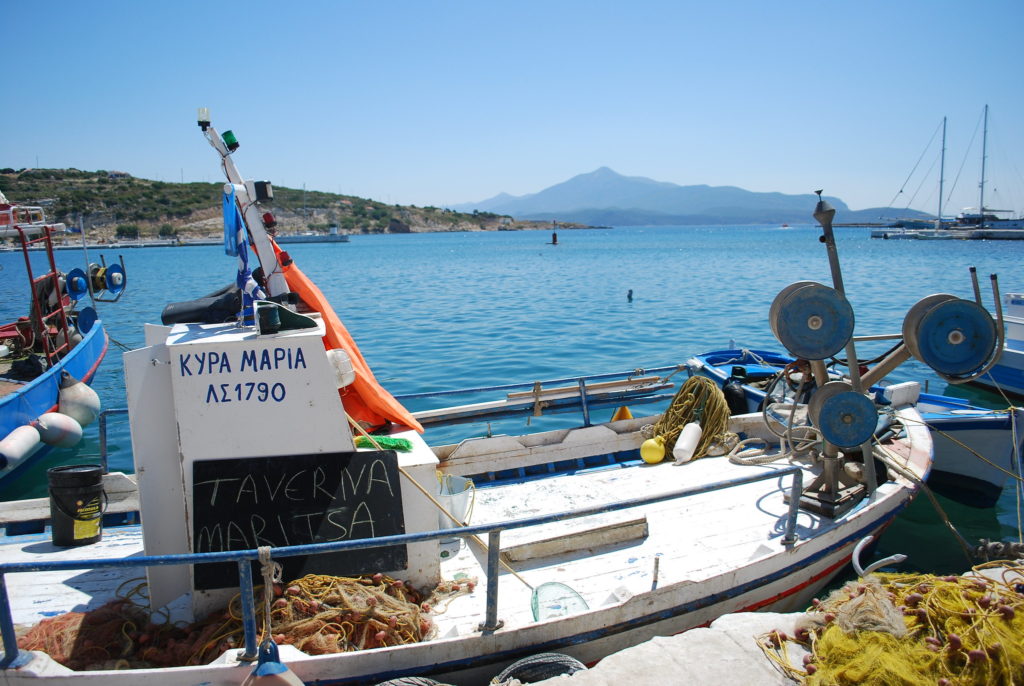Over the holiday break I had the great pleasure of virtually sitting down on the old zoom unit to catch up with a couple of stellar BEARS veterans. Now that grades from the fall have finally been submitted and everyone is hunkering down for a delightful winter’s stay-at-home order, there is, at long last, time to get around to filing the latest pair of BEARS interviews here on the blog. First up is a conversation with Matthias Kalisch, who bravely represents the continental European student contingent on the project, putting up with myriad Canadian micro-aggressions along the way, no doubt! In 2019 Matthias joined us from Tübingen, and our interpretations in the field benefited a lot from his great expertise on and experience with survey methods, roof tiles (based on many years of work at Olympia, great land of fancy tiles), and coins. Take a seat by the fire, pull up an electronic device of your choosing, and check out what he has to say about a huge range of topics, from archaeology to musicology, not to mention a bunch of great photos from Greece and Porto Rafti that Matthias was kind enough to share for this post!
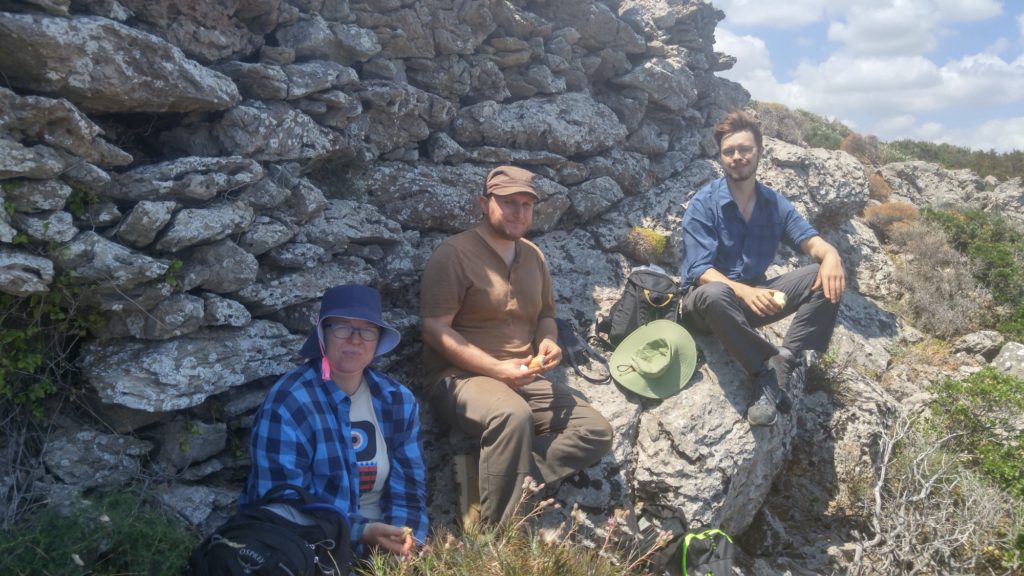
SCM: How did you first get into archaeology and how did you decide to pursue Classical archaeology as a career?
MKK: I was always interested in history and archaeology. As a child for me it was very interesting to look around in Germany because you had all these castles and places which had this long history which is kind of forgotten sometimes. In most of the forests you can walk inside and find the remains of all kinds of castles and things like that. At first I was really into the medieval era, but then when I went to school I got more and more interested in modern history. So that’s what I started studying at first. I don’t know exactly how it works in Canada with the undergraduate program, but in Germany you go to university and you have to know already what you want to do. I started out studying history and musicology. History is still something I really like and am interested in, but at some point, the way that history was taught made it seem like a field I didn’t really want to continue in and a place that I didn’t belong. In my second year, I changed my major from history to Classical Archaeology. I got into Classical Archaeology and the work with this material was really very appealing to me, in comparison with working just with textual sources.
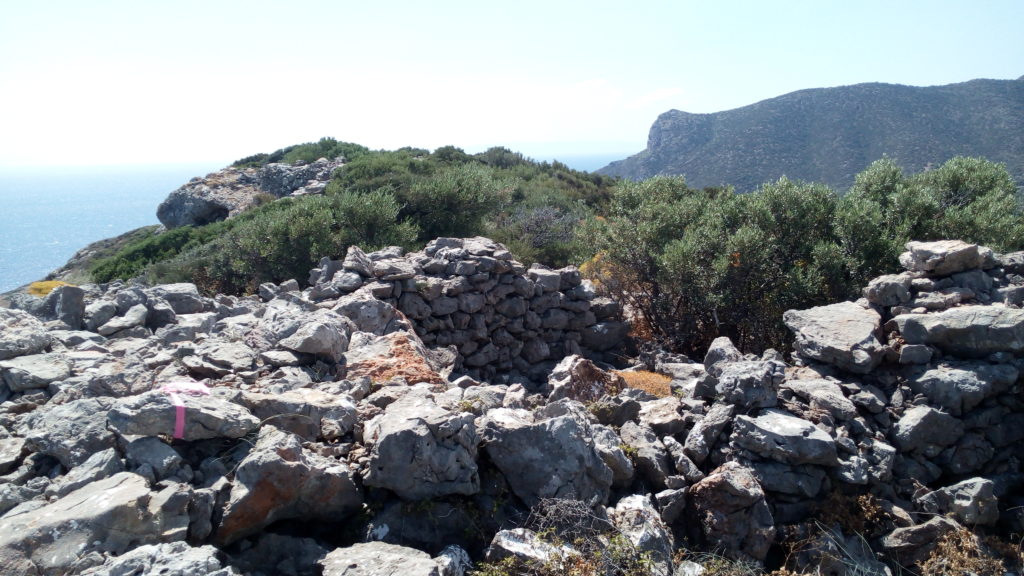
SCM: Right, I see – now tell me a little about the musicology thing! Where did that emerge from?
MKK: Music was always a big deal for me because I play the drums and percussion, and I have been playing in an orchestra now for nearly twenty years. This is also not possible at the moment, which is really sad, because during Christmas time it’s such a cool time to be in an orchestra with all of the Christmas markets and we have a big concert on the 25th every two years. So music was kind of something I was always interested in, and I was especially interested in the history but also in the structure of music: what is music, how is it constructed, that kind of thing. I decided to start musicology because compared to studying an instrument, it’s a very theoretical field, which I liked. This is something cool about music – it was the only ‘mathematical’ thing I ever really found appealing. In Tübingen musicology was very focused on Mozart and the so-called “Wiener Klassik”; we have a very Mozart-focused faculty. But that changed when I was there because a lot of the faculty retired to be replaced by younger professors who had different interests and energies. What I really enjoyed studying was dodecaphonic music, like 12-tone music, because it’s something unpleasant and weird to listen to, but it is a really interesting field of study in musicology, in terms of how that music expresses ideas that other types of music can’t express as strongly.
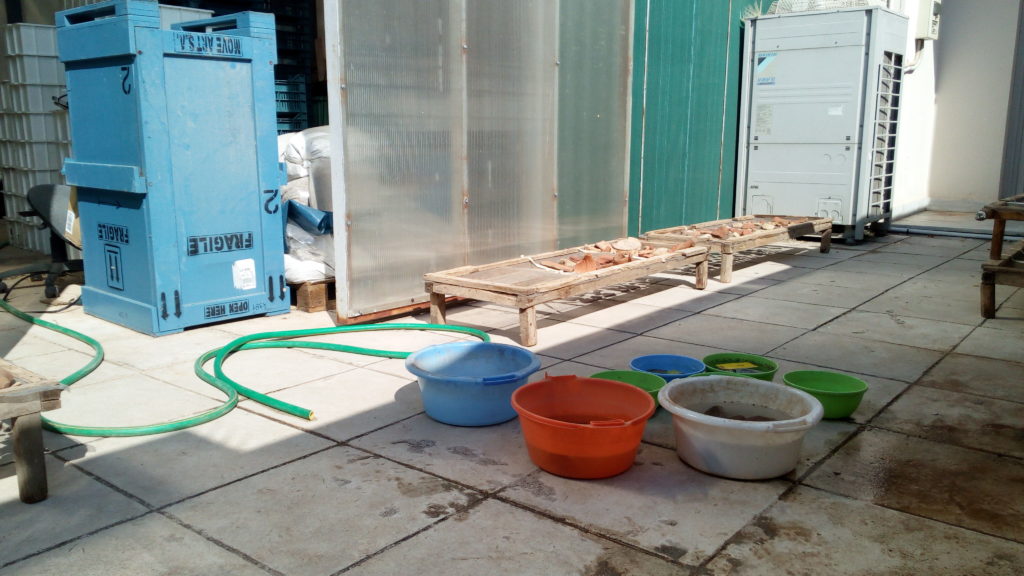
SCM: That is fascinating! I know very little about music. Did you know that Taylor, fellow BEAR, is a talented clarinetist?
MKK: Yeah, we talked about that when we were living together in Porto Rafti!
SCM: Next year you should make a little BEARS band, and you guys can play for us in the evenings.
MKK: Usually I take my ukulele to projects, but I couldn’t last year because I didn’t come to Greece straight from Germany. But I definitely will bring it next year.
SCM: YES. I am going to make it a requirement!
MKK: Okay!
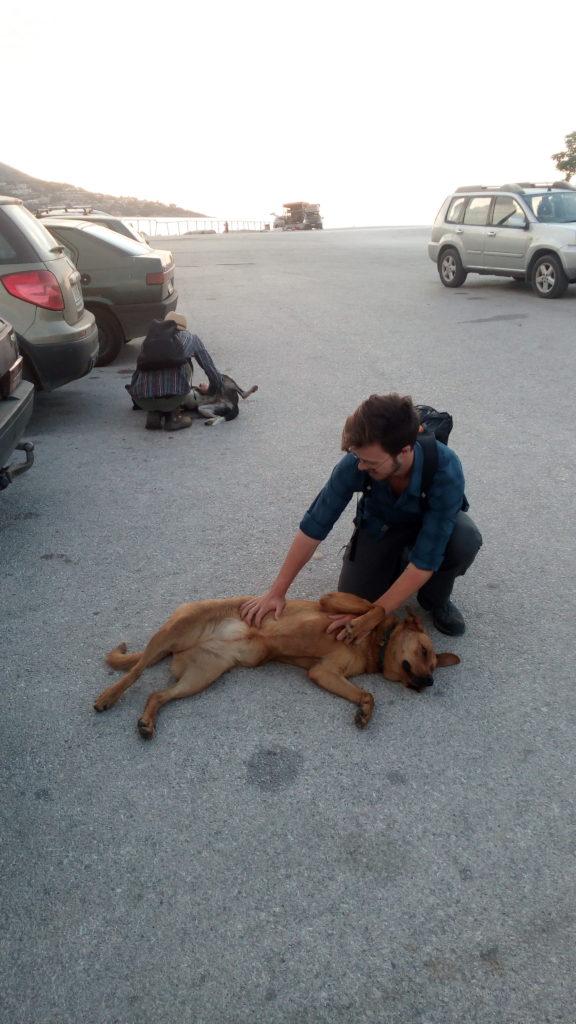
SCM: Okay, so back to archaeology I guess…. What are your main research interests these days? Are you working on anything in particular?
MKK: Because we were not able to go on projects this summer I was able to finish some articles I have been working on and planning to submit. One was a numismatic paper, which is a field I’m very invested in. The other one was about climate in the Ionian archipelago, which was something I didn’t have much experience working on, but which was really exciting to learn more about, because I think that climate has been generally disregarded in Classical Archaeology so far. This is something that prehistoric archaeology deals with a lot, with excellent results, but nobody really deals with it in Classical Archaeology, so I think there is a lot of room for growth there.

SCM: Yeah, good point. In prehistory lately there has been a ton of work on the climate as a driving force in change, but not so much on the historical periods. Cool stuff! Now, returning to the numismatics issue – this is a topic that many archaeologists think of as quite unexciting, or even boring. Can you explain to us – explain to the world! – what’s so wonderful about numismatics as a research topic?
MKK: Ha! What to say? Look, numismatics might appear to be a boring topic at first glance, and I know why it has this reputation. Numismatics is often regarded as the study of something totally unconnected to the whole site or the bigger picture of the project. People assume that you do it in a small chamber in the basement with your magnifying glass, just identifying the coin by emperor or city and being totally isolated and pedantic. Of course, if you approach numismatics this way it is very boring! What I think is that coins as an archaeological source are very interesting and very important. There are several problems you might find when you try to use coins as an archaeological source, especially in terms of documentation. The research I did for my bachelor’s thesis was on the numismatic material in the four Panhellenic sanctuaries, and the point was that there is no publication of this material! There are coins from the sites, but everyone has basically ignored them. There is a fair amount published on Nemea, but the coins from Delphi and Olympia have barely been dealt with. From Olympia, maybe 500 out of several thousand coins have been published! That’s very sad, because when you look into the material closely you can find the same things you see in other studies of artifacts – patterns in history of use in coins, change in the use of parts of the site over time, etc. So that’s what I am trying to do: to approach numismatics from a different standpoint. In my opinion, it makes it more interesting than old-school numismatics. But it’s also very hard to do this work, because you oftentimes have issues with poor recording of the archaeological contexts for coins, which you can’t really fix, no matter how sophisticated your analysis.

SCM: Amazing! I’ve never been so interested in coins! I also had no idea that there were sooooo many unpublished coins from Olympia. What a cool project to resuscitate meaning and interpretation into a big body of evidence from such important sites!
MKK: Yeah, and it’s not just Olympia. Lots of sites have coins in the depot that are just forgotten, moldering there.
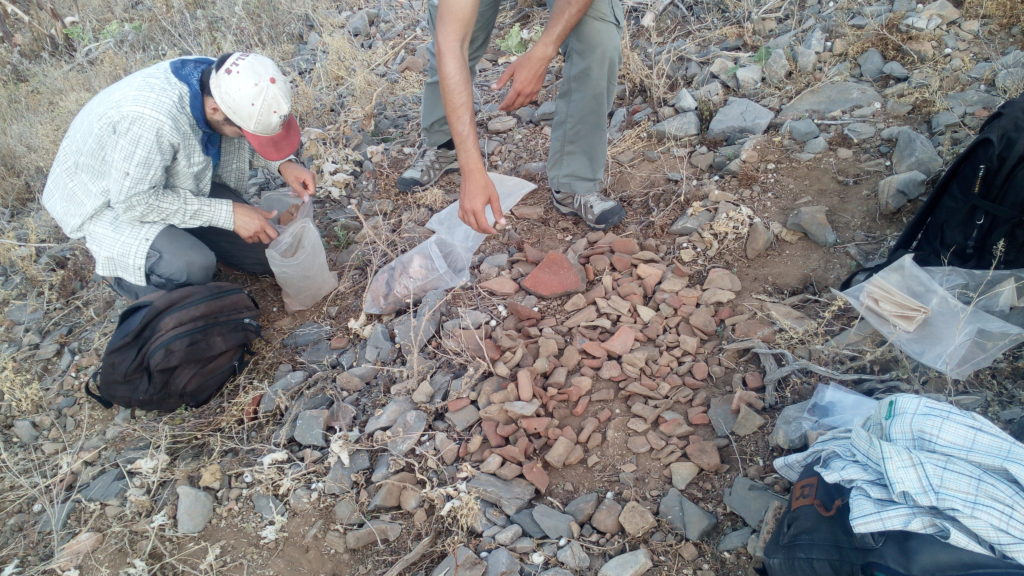
SCM: Do you have a favorite coin or coin-insight that has come from your careful studies of these assemblages?
MKK: From an artistic standpoint, I think the coins from Aegina are really interesting: I really like the turtles! But also very interesting are the early coins from southern Italy, because they look really different than coins usually are supposed to look. They don’t have relief on both sides, they have relief on one side and then the negative/incuse form on the other side. Nobody really understands yet why they did things that way locally in the region. When I started out with numismatics I thought, okay, it might be the same in Sicily because both areas are closely connected with colonization, but that’s not true. Sicily minted coins in the normal way, but southern Italy had this very special form of coins. I find this quite interesting in terms of the arbitrariness of what seems like a pretty instrumental technology.
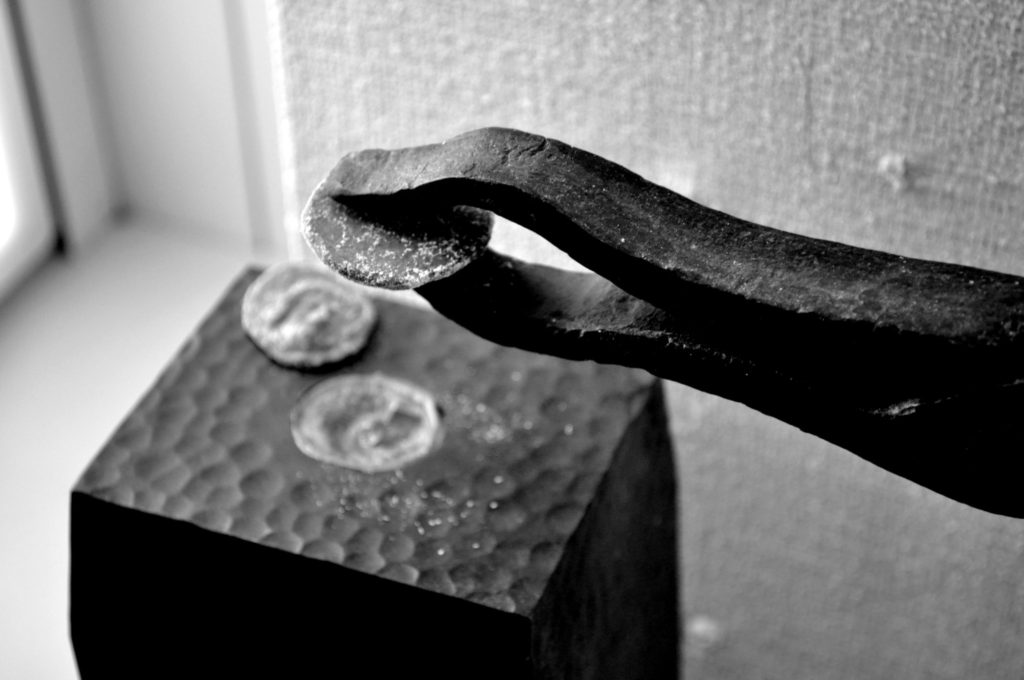
SCM: Nice! I am learning so much about coins from this interview! Thank you for sharing your expertise and insights! Now, clearly you have a ton of experience in the field, both in research and working on field projects. Tell us about the kinds of projects that you’ve worked on and the range of fieldwork that you’ve had experience with up to now?
MKK: Most of my fieldwork has been in survey and landscape archaeology projects, so similar to the BEARS project. My first project in Greece was in 2015 on the Olympia survey project. By the way, that’s why I know how many coins there are at Olympia: because I saw them I the depot! The project did a survey in the surrounding area around the sanctuary. For me this was very interesting because, in my opinion, Olympia is maybe one of the most studied areas in all of Classical Archaeology, with tons and tons of publications, but none of them really address the area around the sanctuary! We worked for several years, and covered a lot of the area around the site, and it’s just impressive how much information you can get out of these surface assemblages. The question is still how people who came to the games or to the festival in Olympia were managing – where did they get their water and food? – and nobody has really looked for such details in the archaeological record. The survey was trying to address that kind of thing, and it was really impressive: some of the stuff that we found in the survey had been documented in maybe a single sentence somewhere from a casual traveler; but having a close look at all of these things really helped us to understand the bigger dynamics of the region around Olympia.
I also went to two projects in Italy, because Tübingen has some more Italy-focused research areas. We conducted a survey around Cosa (north of Rome, a big Republican site), also carrying out a program of magnetometry to make clear the plan of the site without excavating, especially the area of the settlement, rather than the acropolis and other fancy stuff. What was very interesting, and kind of the opposite of the survey, was also going to an excavation at Pantelleria, which is a small island between Sicily and the coast of Tunisia. Tübingen conducts an excavation on the acropolis of the city, and working there you get a really good impression of how digging works in comparison to survey fieldwork. The material is certainly different. In Cosa, we did not actually collect any material, but in Olympia most of what we found were roof tiles or scattered ceramic sherds. In the excavation, of course the material is much more well-preserved and voluminous. Although as you pointed out in Porto Rafti, the survey material on BEARS is sort of more like an excavation would produce.

SCM: Do you have a preference for certain kinds of projects, say survey work or excavations?
MKK: That’s a good question. I like both kinds of work, even though there are so different. On a survey, I like to be in different places every day, and to cover a large area, also orientating yourself every day in a new way. On the Olympia survey we actually were in different areas every day: we drove somewhere, got out, took out our maps, and had to locate ourselves, the place you wanted to survey, and everything around you. That was very intense sometimes, because sometimes you realized you actually had no idea where you were! Which was not good…. but it happened! And that’s different on an excavation obviously because you work on the same place sometimes in the same trench for a month! But I guess it’s just two very different approaches in archaeology, and I like the diversity in that. It’s also what we found in Pantelleria, it was so interesting: there were architectural structures, in the year before I was there the project excavated an assemblage of cannonball-looking spherical stones, there was also a leg or arm of a statue in there too. As we continued to excavate the room in the year after, we actually found more of the projectiles and the remains of an ancient siege engine. So there are things about both approaches that I like, and I think it’s important to attend to the complementary value of the data they each produce.

SCM: Such a diplomatic answer! You’re playing both sides of the aisle! But of course, you’re right that both approaches are valuable and produce useful information. I like your description of the fun part of survey being having to figure out where you are all the time and occasionally getting lost. That is something that I kind of dislike about the BEARS survey actually, that it’s sort of impossible to get lost around Porto Rafti, and that we go to the same few places every day. I’m not sure how to categorize what exactly we’re doing out there!
Now, turning to a more controversial question: do you prefer Greece or Italy as a place to live and work on an archaeological project?
MKK: Definitely Greece.
SCM: Interesting! You seem very sure! Why? (By the way, I agree with you!)
MKK: I don’t know! I mean, I do know. The first time I went to Greece was 2015, and before we went to the project, we did a student trip with our department there and basically covered the area around Athens and Delphi, then the Peloponnese, for about two weeks. The experience being in Greece and the opportunity meet the people, in comparison to Italy, was just kind of more intense. This might have been the product of the fact of the circumstances at the Olympia project, but I felt much more connected to the people and the landscape of Greece for whatever reason. I love the sort of mythological sphere of the landscape…I have that impression much more in Greece than in Italy. And I still have a lot of friends from the Olympia project and usually try to visit them when I am in Greece, so I have a strong connection to that area.
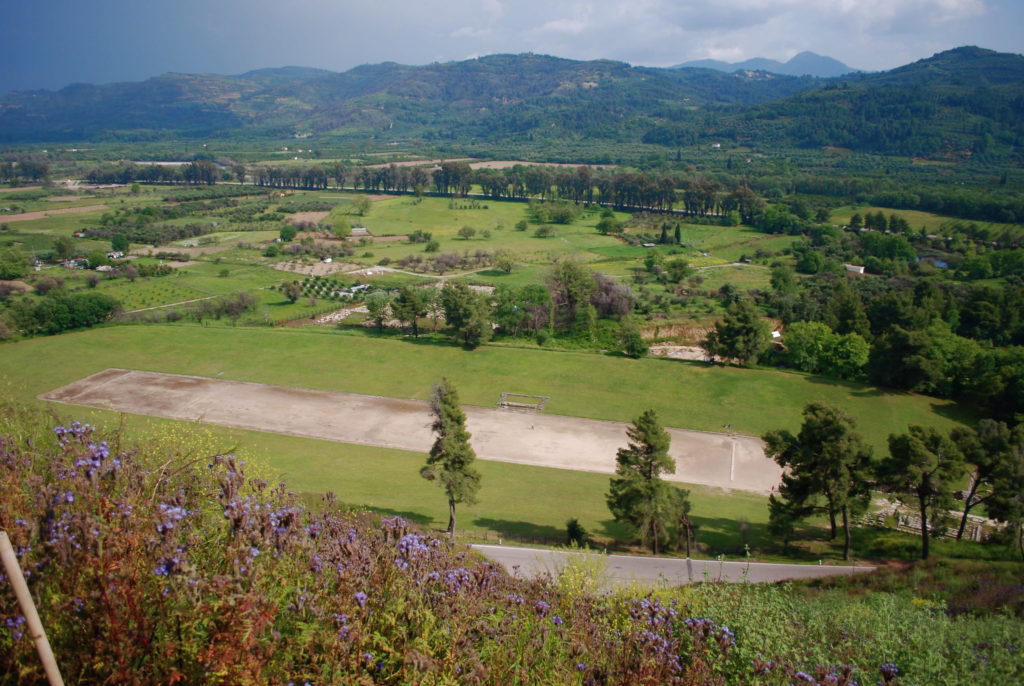
I also really like the food in Greece quite a lot. People really like Italian food, and I do too, but sometimes, especially on excavations, it’s mostly pizza and pasta. I know there is more to Italian food, but in terms of the food you get on projects the diversity that you get is much greater in Greece.
SCM: Yes! This is something that I often get into debates about with my colleagues who work in Italy. They are always arguing that Italian is so much better than Greek food, and I think the complete opposite!
MKK: Exactly!

SCM: I think people just don’t understand Greek food. All they ever order is souvlaki and salad. But there’s so much more; it’s such a rich cuisine, even if it’s not as famous for a bunch of expensive cured meats and cheeses and stuff. But the people who work in Italy are so chauvinistic about Italian food! Anyway, I am glad we agree!
MKK: On the Olympia project we usually had dinner all together, and I think in the entire five weeks we were there, there was only one time that we had the same meal. We ate at a great little taverna run by an older woman and man cooking in the kitchen, and they were making super traditional, old-school Greek food. And I think that’s what people mostly confuse: there is Greek tourist food and traditional Greek food, and the two are very different. So most tourists think that Greek food is mostly fried, but that is absolutely not the case at all. Like you said, the cuisine is really diverse internally and the spices are much more interesting than what we get in central Europe. I can definitively say that Greek good is far superior to Italian.
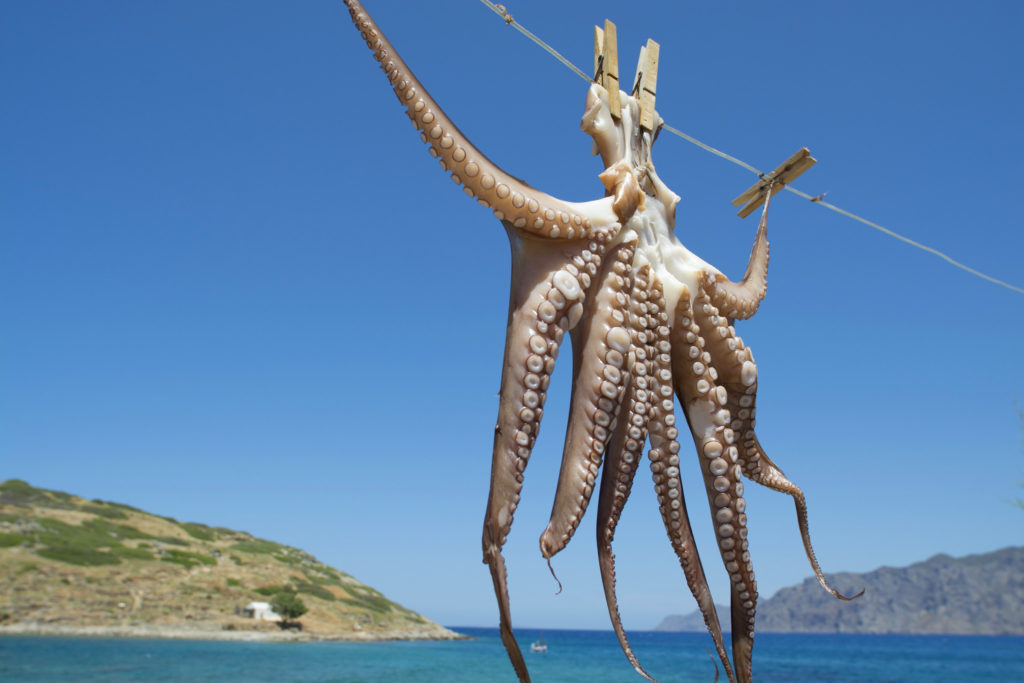
SCM: Preach! I agree with your earlier point about Italian food on excavations – my one project in Italy served us only meagre portions of pizza and pasta and it was totally boring and repetitive and we all felt kinda malnourished at the end because of the lack of protein.
In terms of the landscape and cultural environment, I guess I would say that of all the places to spend time in Greece, the modern town of Olympia is not necessarily my favorite. You know, in terms of a place to live. Probably most people would say the same about Porto Rafti – not exactly an idyllic traditional Greek village. But aside from that maybe Porto Rafti and Olympia don’t have too much in common – did you live in the nice secluded German house in the forest at Olympia? Or what was it like to live there amidst the cruise ship tourists for five weeks?
MKK: We actually could not live in the German excavation house, because it was too small for our group. Also, the excavation team lives there, and we were just the survey project! We stayed in one of the hotels in town, but it was really more like a hostel with shared rooms and bathrooms and that kind of thing. I’m pretty sure we got a special deal, so it was cheap for the project to put us in there for five weeks.
Olympia and Porto Rafti are both tourist areas or destinations, but Porto Rafti is a Greek destination, where people from Athens come for vacation, or just the weekend, but in Olympia you have tourists from all over the world. The town is just one big street with the hotels and the shops on it. Especially on the weekend and on Sunday when we had free time there were just buses everywhere because they were bringing in tourists and they were carrying out tourists…all day long! In the first year, we would walk around the street and everybody would bother us or ask us to eat at the restaurants, and we kept telling them that we weren’t tourists and ate somewhere else with the team. Then, after two weeks, the restaurant workers started recognizing us and stopped harassing us about eating at the restaurants, but we’d get into small conversations instead, like about the weather or whatever. And after three years we had developed these relationships with the people, like neighbors greeting each other every morning. So that was a very interesting experience, because we went from tourists and foreigners to something else. I enjoyed Olympia and staying there very much, but I definitely see that it is not the typical Greek village that you might stay in on a project!


Porto Rafti is similar in the sense that you don’t have the village center with a church or a kafeneio or a bakery where you could sit around the whole day drinking a frappe and seeing the village life go by. The geographical layout of the town is even less conducive to that than Olympia, because the distribution of the houses is quite confusing; there doesn’t seem to be much of a logic to the town and everything is really spread out.
SCM: That is super cool about Olympia – that you and the team were able to delve behind the tourist façade and actually hang out with the people who live and work there on their own terms.
MKK: Yeah – for example, in the hotel where we were living a vase-painter was actually working out of the basement. He was basically our weather channel. Every morning we would ask him how the weather would be before we packed for work, and we’d take our raincoats or not based on what he said!

SCM: That is amazing! The basement craftsman/weather station. You’re right about Porto Rafti, too. I think it seems pretty clear that the people that come from Athens aren’t super interested in ‘the community’ so much as they want to go into their big concrete compounds and hang out alone in their beach houses. So, it’s definitely a bit of a challenging place to try to engage with a local community, whatever that would mean in an Athenian beach resort town. Anyway, let’s do one more question! How was your experience on the BEARS project overall – any impressions of the work or the people or strong memories that you want to share with the blog readers?
MKK: I really enjoyed the project a great deal! The people were wonderful, first of all, and I really enjoyed meeting the team and working with them. At first, I was not sure what to expect, in a way, since it was the first project I’ve worked on which was so international. At Olympia, we mostly spoke English because we also had Greek people working with us, but you always had your group of Germans where you could speak German if you wanted to. On BEARS of course most of the people were English speakers, which was a new situation for me. But I really enjoyed it, and everyone was really nice and friendly. In terms of the work, I definitely loved sailing to Raftis. I really like the sea, so going out in the boat was really lovely. Obviously the finds we had were incredible, on Raftis especially. Usually you just see stuff like that in a museum! To pick up things like that from the ground and hold them in my hands was so amazing.
Another thing that was interesting to me was the amount of digital technology that we were using, for instance collecting data on iPads. On my other projects we’ve always taken notes on paper and then had to spend a lot of time transferring the data to the computer. So it was interesting to see the purely digital recording method and to find how much time that opened up in the afternoons and evenings because of the absence of data entry.
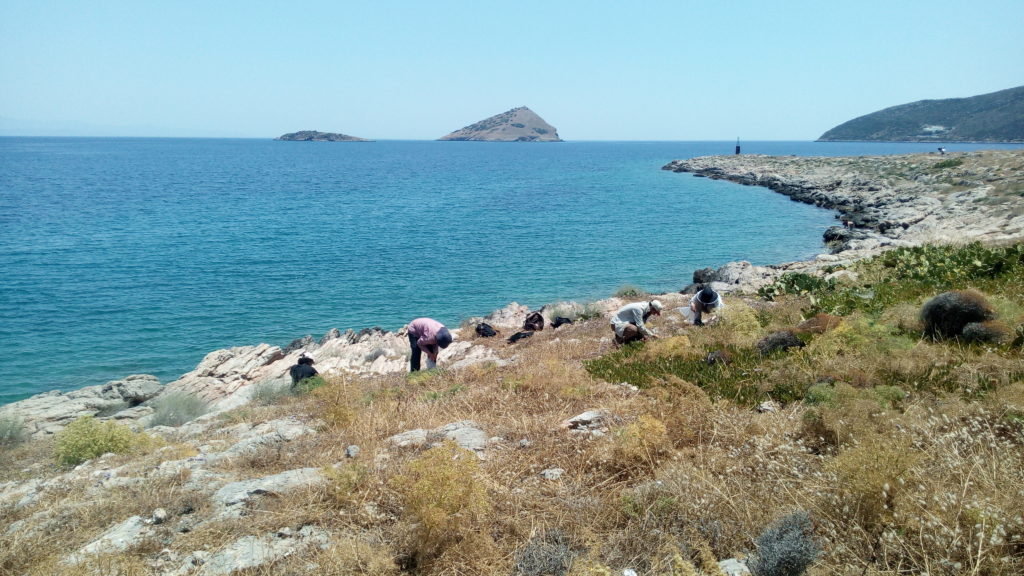

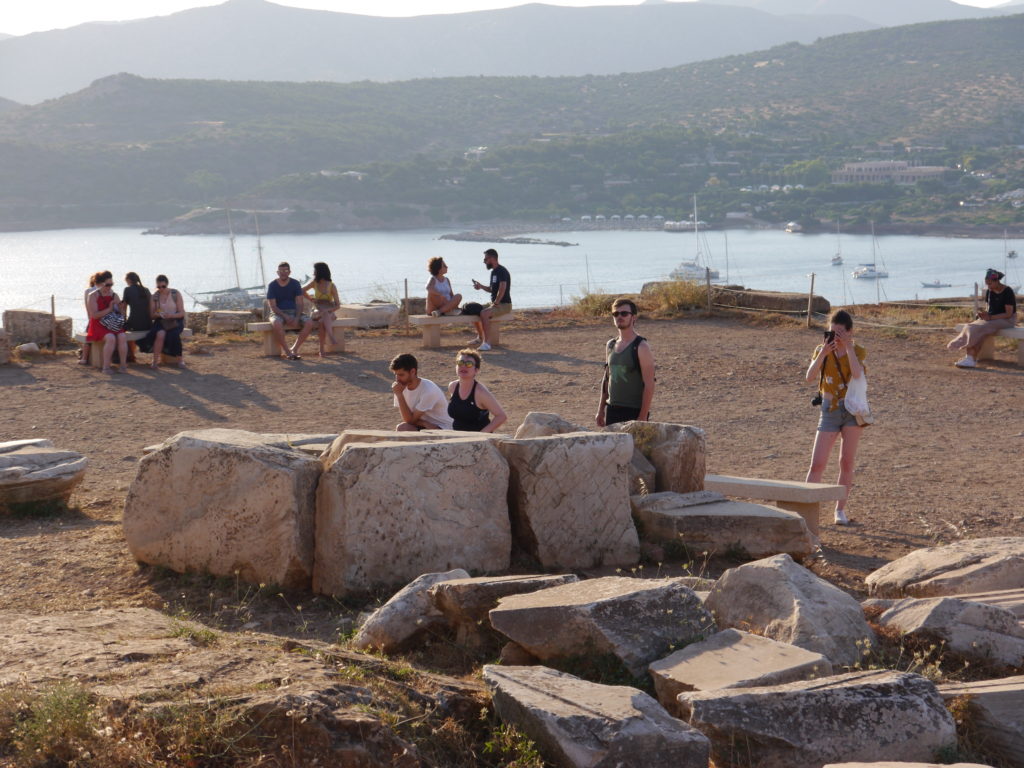
SCM: Yeah! It all worked out pretty well. I was kind of nervous about it, because a lot more can go wrong when you rely on technology, in a way. But I was super glad that we did not have to do any data entry! Which was always my least favorite part of fieldwork. And hopefully we’ll get you back out on the boat in future seasons, too. Speaking of the bright future, what are you most excited to get back to doing next time you are able to return to Greece for fieldwork?
MKK: Hmmmm. I would say the food! Just going to a nice fish taverna by the sea and sitting there in the evening after a long day of work…I really miss that feeling of enjoying a long evening at dinner and relaxing after a very tiring day of work. It’s not the kind of feeling you get in normal life, and it’s also never the same to have Greek food in Germany. You need the smell of the sea and the air and the sun and the particular ingredients. I am definitely looking forward to that.
SCM: Great answer! I look forward to such evenings in Porto Rafti sometime soon, too. Meanwhile enjoy your holiday preparations, and thanks again for taking the time to do this interview!
